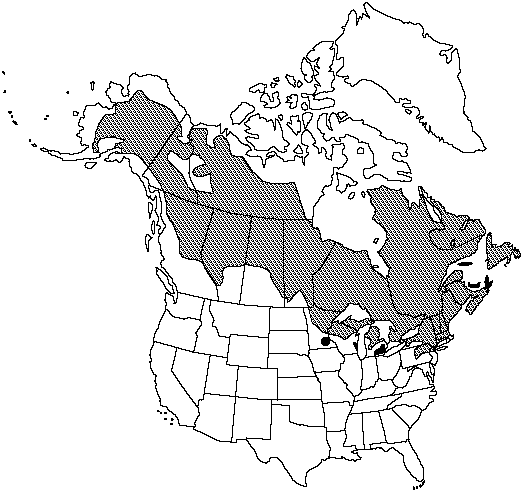Picea mariana
Prelim. Cat. 71. 1888.
Trees to 25m (often shrublike); trunk to 0.25m diam.; crown narrowly conic to spirelike. Bark gray-brown. Branches short and drooping, frequently layering; twigs not pendent, rather slender, yellowbrown, pubescent. Buds gray-brown, ca. 3mm, apex acute. Leaves 0.6–1.5 (–2) cm, 4-angled in cross-section, rigid, pale blue-green, glaucous, bearing stomates on all surfaces, apex mostly blunt-tipped. Seed-cones 1.5–2.5 (–3.5) cm; scales fan-shaped, broadest near apex, 8–12 × 8–12mm, rigid, margin at apex irregularly toothed. 2n =24.
Habitat: Muskegs, bogs, bottomlands, dry peatlands
Elevation: 0–1500m
Distribution

St. Pierre and Miquelon, Alta., B.C., Man., N.B., Nfld. and Labr. (Nfld.), N.W.T., N.S., Ont., P.E.I., Que., Sask., Yukon, Alaska, Conn., Maine, Mass., Mich., Minn., N.H., N.J., N.Y., Pa., R.I., Vt., Wis.
Discussion
To a limited extent, Picea mariana hybridizes with P. rubens, e.g., on disturbed sites in eastern Canada. Natural hybridization with P. glauca, though reported, remains unverified (A.G. Gordon 1976).
Because Picea mariana is a small tree, it has limited commercial value. Frequently it is harvested with P. glauca and used for pulp.
Black spruce (Picea mariana) is the provincial tree of Newfoundland.
Selected References
Lower Taxa
"broadest" is not a number.